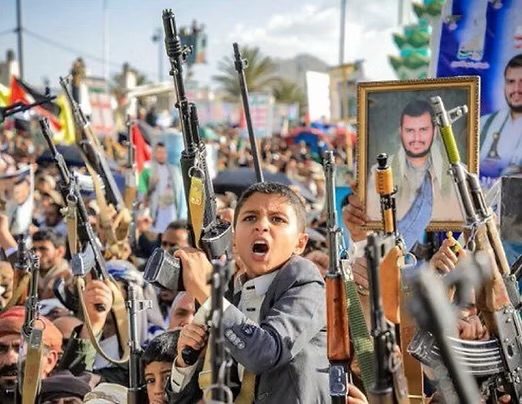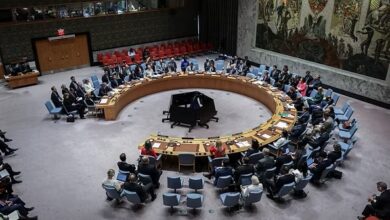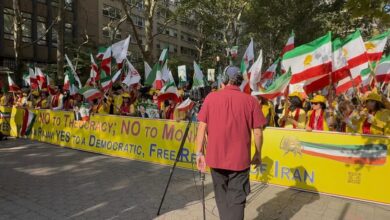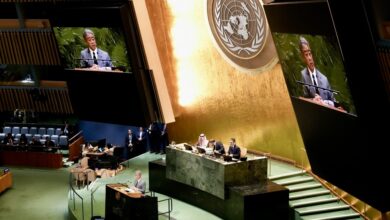Yemen on the Brink: UN Warns the Houthis Have Become a Regional War Machine


New York: UNHQ –
Yemen’s long, grinding war took an even darker turn this past year, according to a new UN investigation that describes a country caught between deepening internal repression and a widening regional battlefield.
The report, delivered to the Security Council by the Panel of Experts on Yemen, paints a stark picture: a conflict that no longer sits neatly within Yemen’s borders. Instead, the Houthis — the dominant force in the north — have leveraged the war in Gaza to extend their reach far beyond the Red Sea, firing missiles toward Israel, sinking commercial ships, and entrenching themselves as a regional armed actor with ambitions well beyond Yemen’s mountains.
But the story inside Yemen is even more unsettling.
A society under pressure
Researchers describe the Houthis tightening their grip on daily life with quiet but relentless precision. New security units track phone calls. Neighborhood committees police thought and behavior. Women’s enforcement squads — the Zaynabiyat — patrol public spaces, raid homes, and reportedly punish dissenters with electric shocks.
Children are pulled into summer camps that look less like schools and more like induction centers. Families that refuse to send their kids risk losing access to subsidized gas or humanitarian aid. Civil servants haven’t seen stable salaries in years. Electricity blackouts stretch for days. In some governorates, for weeks.
It’s not the kind of damage that makes headlines. It’s the slow kind — the kind that hollows out a society.
Economic freefall and public anger
The Yemeni rial now trades above 2,800 to the dollar in government-held areas, a number so painful that even shopkeepers say they change their prices more often than they sweep their floors. Protests have erupted over salaries and basic services, and many communities speak openly of exhaustion: too hungry to fight, too scared to speak, and too proud to beg.
The report warns that this economic collapse, more than any airstrike or rocket, may decide the future of the war. Yemenis simply cannot sustain another decade of this.
A war at sea — and beyond
While Yemen struggles at home, the Red Sea has become one of the world’s most dangerous shipping lanes. The Houthis have refined their attacks with unsettling speed, using anti-ship ballistic missiles, explosive-laden boats, and drones to hit tankers and cargo ships from the Bab al-Mandab to the Gulf of Aden.
Two major vessels — the MV Magic Seas and MV Eternity C — were sunk this summer. Several crew members were killed. Tens of thousands of ships now reroute around southern Africa, adding weeks to travel time and billions in global costs.
The Houthis claim the attacks are meant to pressure Israel and its allies over Gaza. But diplomats say the fallout lands on everyone: Egypt has lost more than 70 percent of its Suez Canal traffic, international freight prices have tripled, and fuel shipments across East Africa are now considered “high-risk.”
Airstrikes fail to break Houthi momentum
Israel and the U.S.–UK coalition have carried out hundreds of strikes on Houthi infrastructure, hitting ports, radar systems, drone factories, and even Sana’a airport — where all four Yemenia aircraft were destroyed on the tarmac.
Yet the Houthis have adapted. Their missiles still reach more than 2,000 kilometers. Their drones keep flying. Their commanders keep appearing on state-run television declaring victory.
Behind closed doors, Western officials admit what the report makes plain: the Houthis are resilient, disciplined, and financially self-sufficient. Sanctions have barely scratched them.
An expanding militant network
Perhaps the most alarming section of the report is the confirmation of deeper ties between the Houthis and militant groups such as Al-Shabaab in Somalia and AQAP inside Yemen. Investigators found evidence of weapons shipments, drone training, and even coordinated logistical support.
Somalia intercepted several shipments of explosives and drones. Nearly 400 fighters, mostly young men, were reportedly transported from Somalia into Yemen for training.
Taken together, these findings suggest that Yemen’s conflict is no longer a civil war with regional implications — but a regional conflict using Yemen as a staging ground.
A country no longer on the verge — but already over the edge
For all the numbers, missiles, routes, and sanctions in the report, the human element is what stands out: a generation of Yemeni children raised in militarized education, families trapped in a once-in-a-century economic collapse, and a country where even peace negotiations have become symbols rather than solutions.
The UN Panel offers technical recommendations — for better sanctions enforcement, tighter inspections, stronger information-sharing — but the subtext of its 228 pages is blunt.
Yemen is not simply stuck. It is sinking.
And unless the political landscape shifts in ways it hasn’t for more than a decade, millions of Yemenis will continue to live — and die — in a conflict that the world has learned to watch, mourn, and move past.



